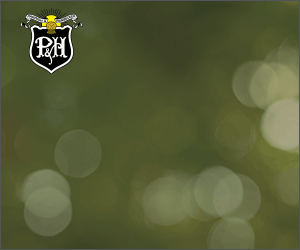Research roundup
FIND OUT WHAT’S NEW IN THE WORLD OF RESEARCH
Glyphosate-resistant Canada Fleabane won’t take hold, researcher predicts
Maggie Robertson
Control is possible for glyphosate-resistant Canada Fleabane, even though the thought of it scares farmers.
That’s the word from Professor Rene Van Acker at the University of Guelph. He and his PhD student Eric Tozzi studied the biology and ecology of glyphosate-resistant Canada Fleabane, and found it poses little long-term peril to Ontario farmers.
“Glyphosate-resistant Canada Fleabane infestations are not a life sentence,” says Van Acker.
He says Canada Fleabane is a seed-limited species whose seed has difficulty germinating in wet soils, does not endure deep burial and has little or no dormancy. This means that it does not form a persistent seedbank. And without a persistent seedbank, the weed has difficulty surviving, even glyphosate-resistant populations.
Fall or spring tillage may greatly reduce the size of resistant populations and prevent germination, but diligence in seed return each season is also important, says Van Acker
In the future, he intends to look at other glyphosate-resistant weed species.
Funding for this research was provided by the Ontario Ministry of Agriculture, Food and Rural Affairs and the Natural Sciences and Engineering Research Council.
Collaborators in this research are Rob Grohs (University of Guelph, Simcoe), Don Kitchen (University of Guelph, Woodstock), Peter Purvis and Francois Tardif (University of Guelph, Guelph), Hugh Beckie (AAFC – Saskatoon) and Peter Sikkema (University of Guelph, Ridgetown Campus). •
Title Number 2
Katharine Tuerke
Since the soybean aphid’s arrival in 2001, it has been invading fields all across Southern Ontario. University of Guelph researchers say the key to controlling them is to first control buckthorn.
Here’s why. Aphids overwinter on buckthorn shrubs before migrating to soybean plants in the spring. Professors Art Schaafsma and Rebecca Hallett investigated the abundance and location of buckthorn shrubs in hedgerows located near soybean fields.
Trials of 25 soybean fields from Southwestern Ontario were conducted during low and high aphid years. Fields with buckthorn in the hedgerow were at risk during low aphid years and fields within four kilometres of buckthorn were at risk during high aphid years.
“Removing buckthorn from hedgerows will lower the risk of economic loss and further infestation by soybean aphids,” says Hallett.
Funding for this work was provided by the Agriculture and Agri-Food Canada Pesticide Risk Reduction Program, Grain Farmers of Ontario and Natural Sciences and Engineering Research Council of Canada. •
Research Roundup is provided by members of SPARK (Students Promoting Awareness of Research Knowledge) at the University of Guelph’s Office of Research. For more information, contact a SPARK writer at 519-824-4120, ext. 52667.






















